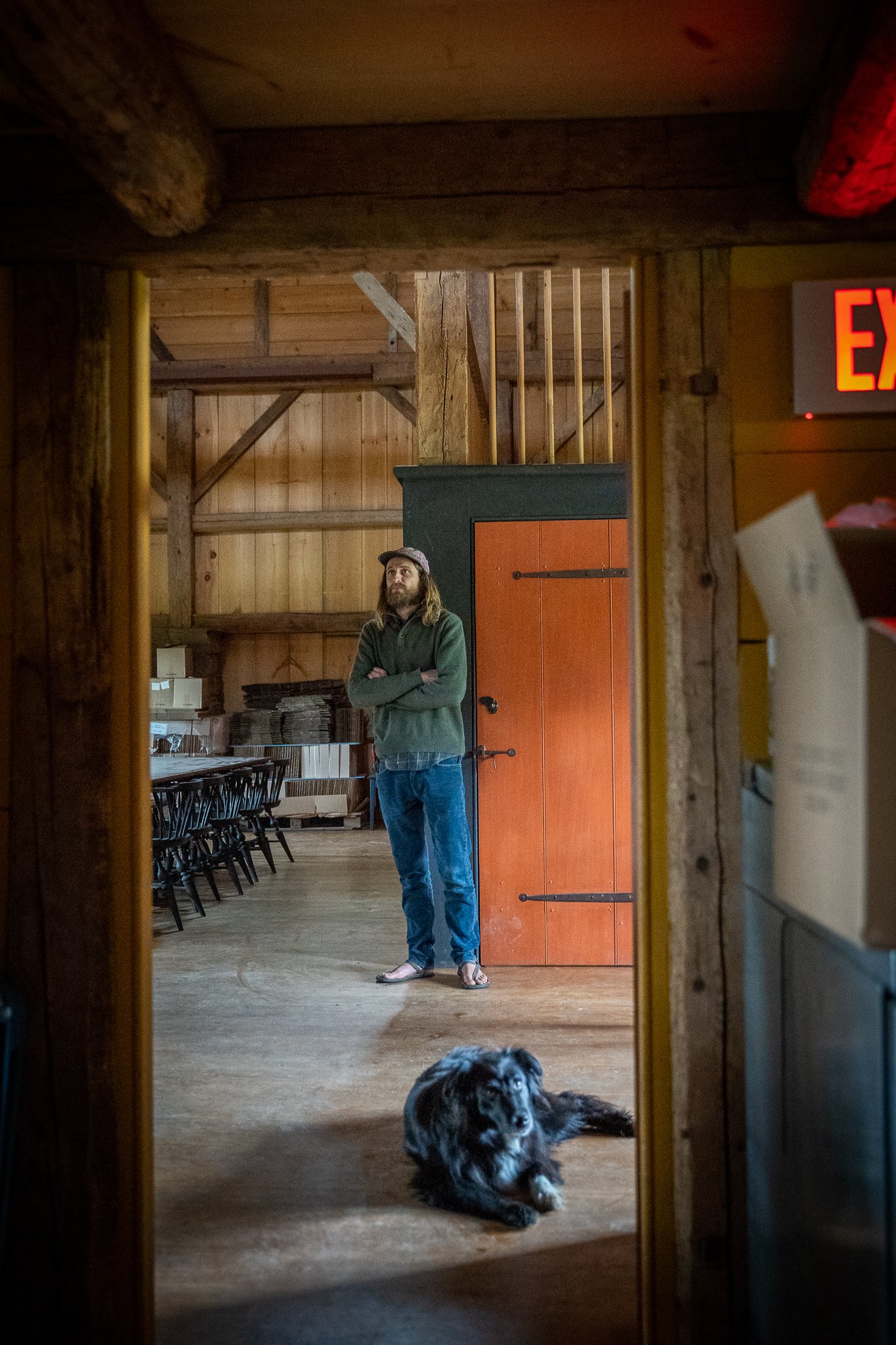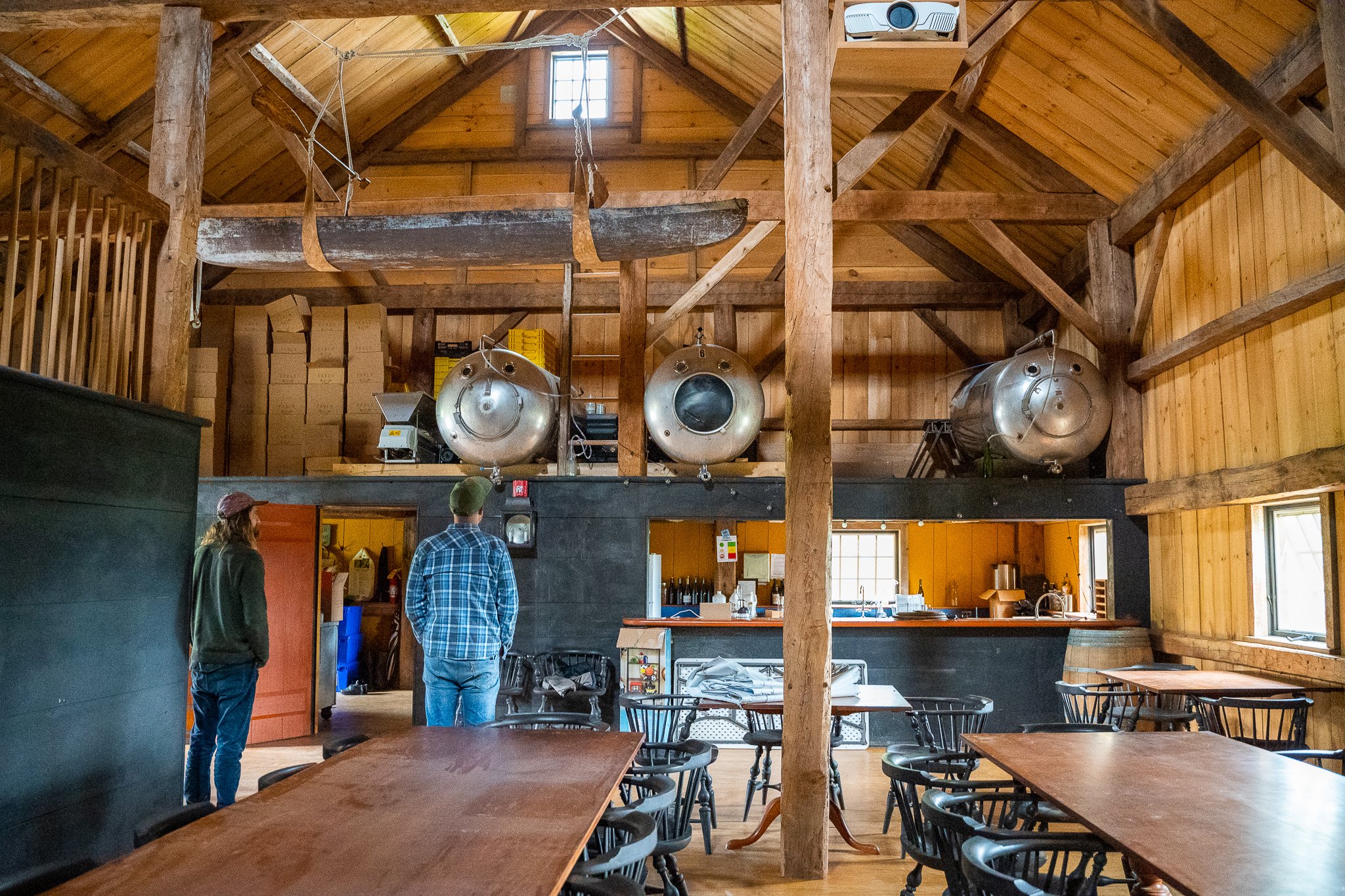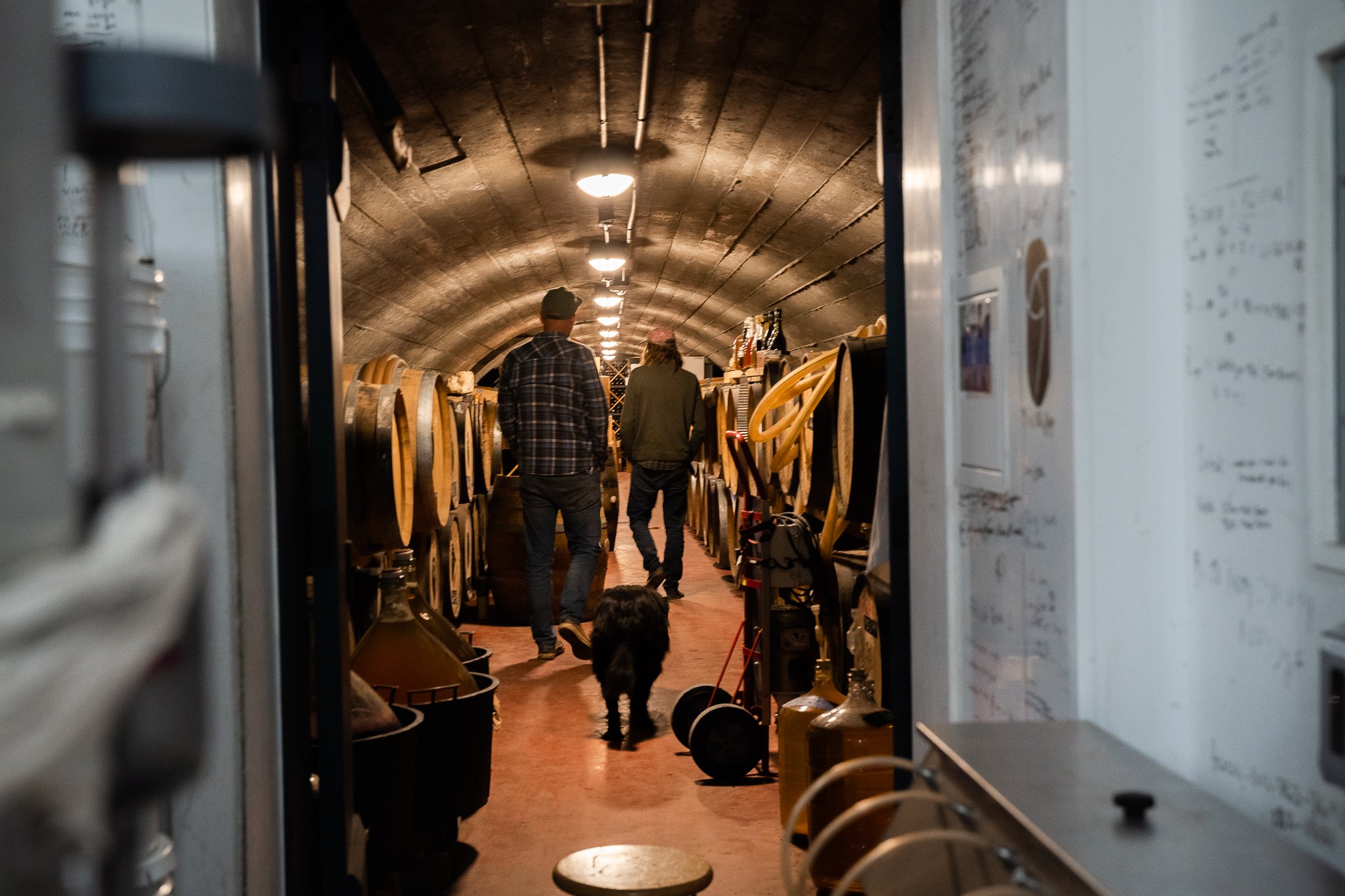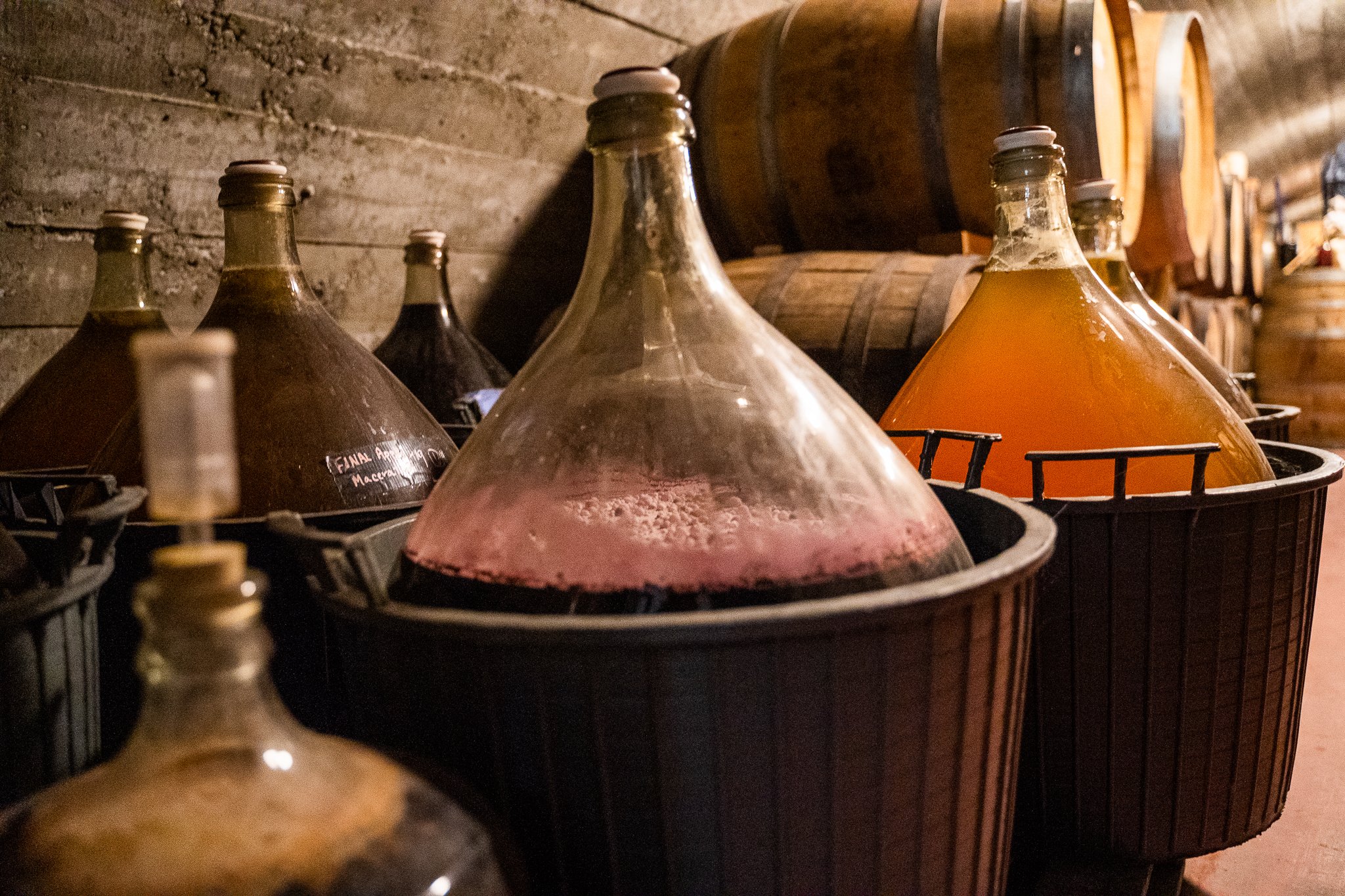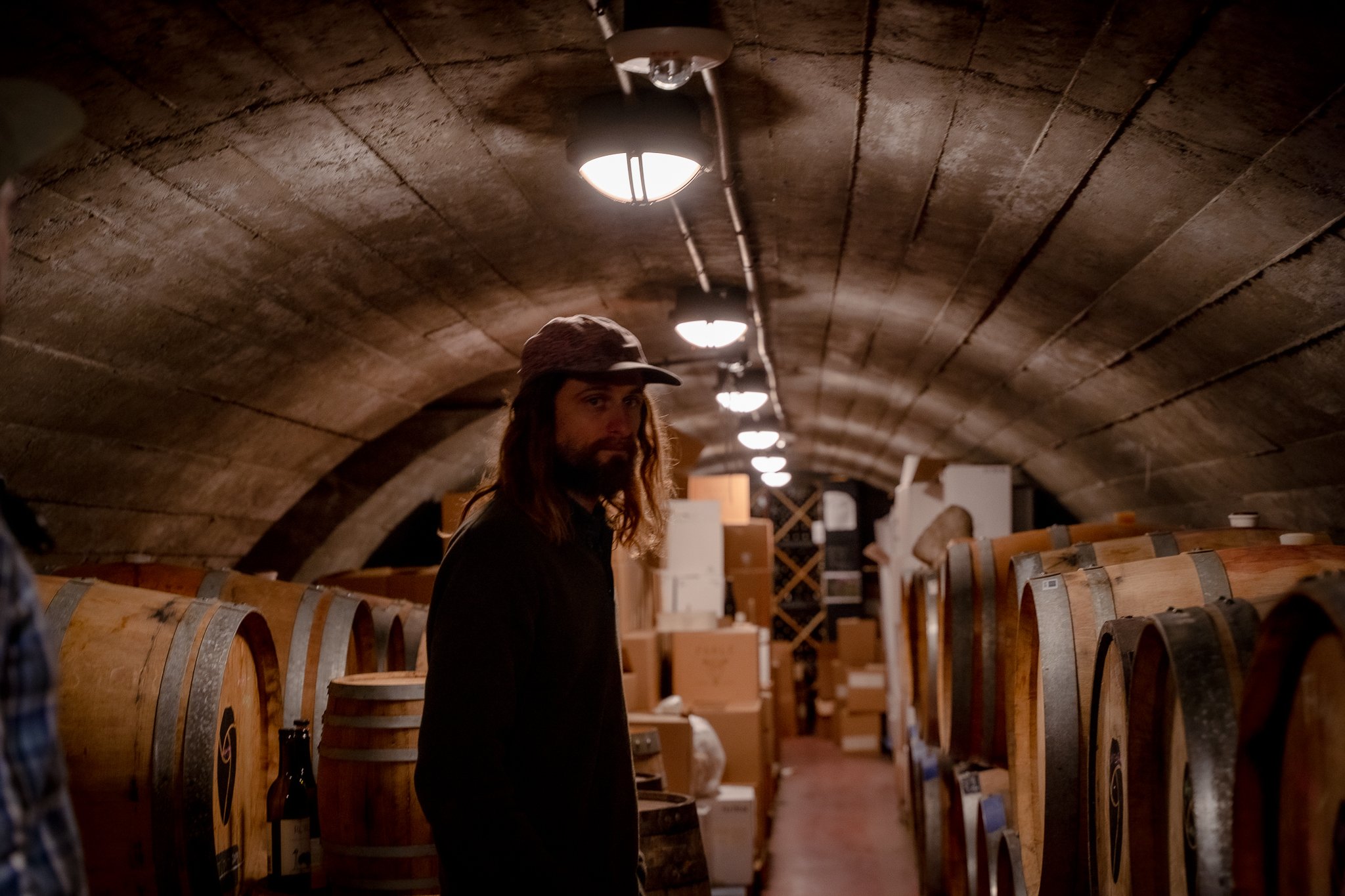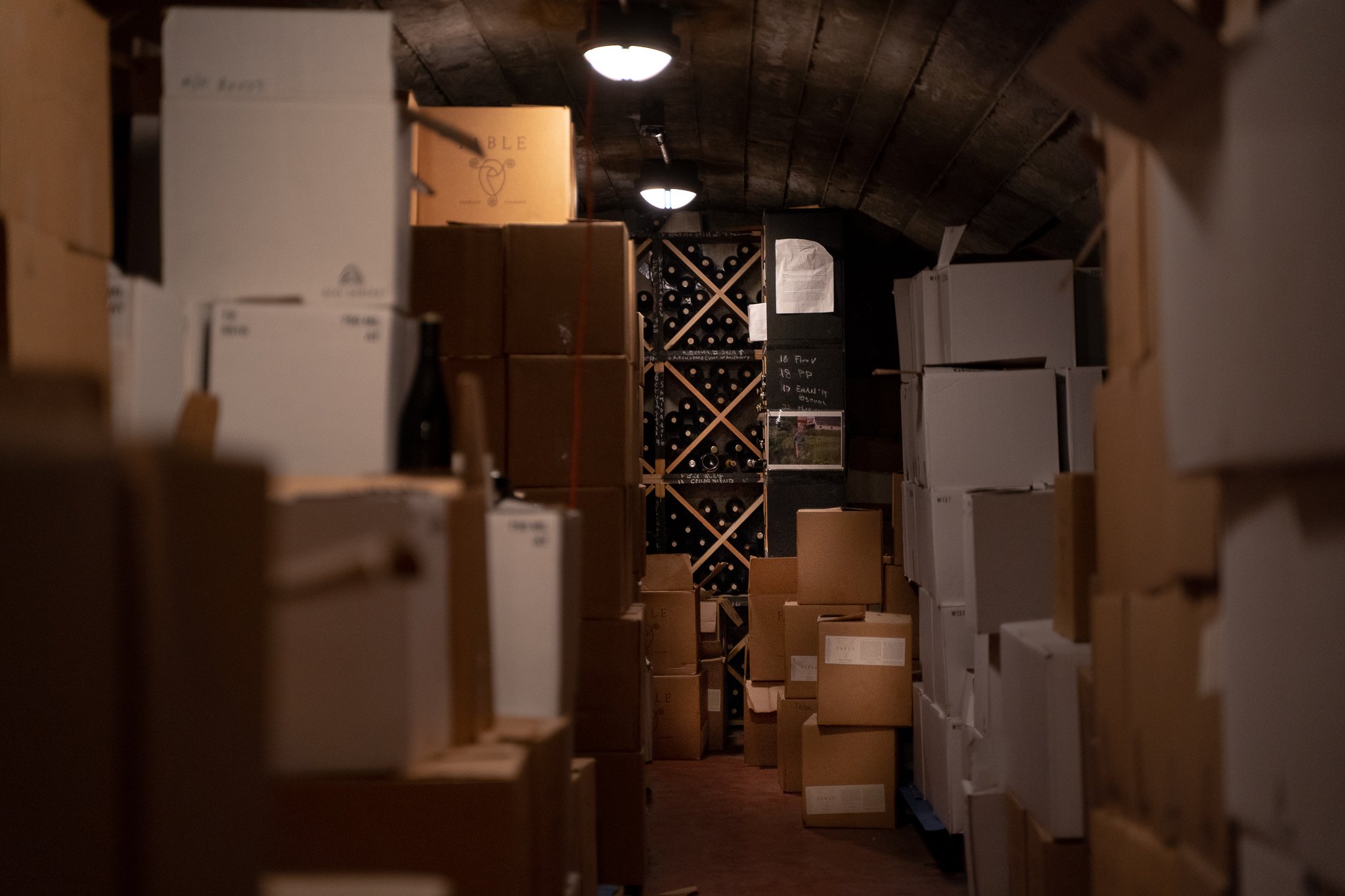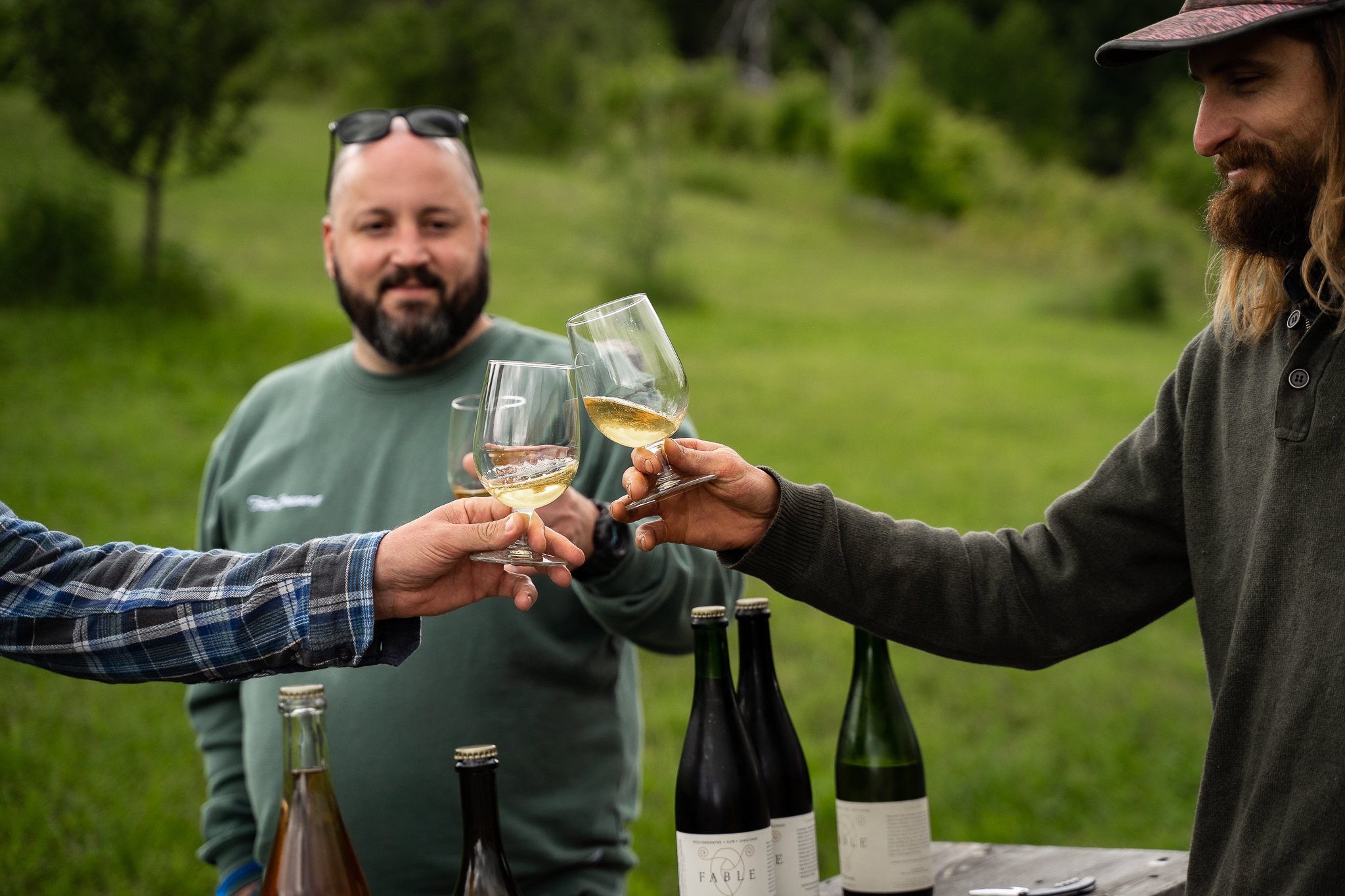A Slow Unfolding of Wings — Fable Farm Fermentory in Barnard, Vermont
It struck me, as I was sipping Fable Farm Fermentory’s tart and notably dry ciders in their picturesque Vermont tasting room, that at their peripheries, cider and beer often speak a similar language.
This happened on a sunny Saturday afternoon in the barn-like structure that houses Fable Farm, where a wide range of predominantly apple-based fermented beverages are produced in the town of Barnard. I was having an enlightening conversation about cider and Fable Farm itself with Josh Hinchman, the sole employee onsite that day; the others were working at a farmer’s market in the area.
Photography by Melissa Jones
Thinking of cider and beer in a way I had never done before, I asked Josh if he drank beer, and he noted he didn’t care for it. Given my very recent revelation, I found this intriguing, because I saw great similarities between these beverages. And though some cider producers are making efforts to connect with beer consumers by packaging in cans and adding hops to their products, it’s with mixed-fermentation where there’s the greatest crossover. Elsewhere in the region, breweries like Allagash, Oxbow, and Kent Falls all make tart, complex beer that could easily be served alongside ciders like the ones Fable Farm makes without anyone batting an eyelash.
However, to simply call their products cider would be inaccurate. Owners and brothers Jon and Chris Piana quite deliberately refer to their beverages as wine, using the broad definition to include any alcoholic beverage fermented with fruit juice. Yet, they also include grape juice in some of their ciders. And sometimes they make 100-percent grape wine. For simplicity’s sake, I’ll generally refer to their products in this article as cider.
***
Unlike mass-produced ciders you might find in the supermarket, Fable Farm offers something wholly produced by its immediate environs, conveying a strong connection to the pastoral landscape. The cider is alive and vibrant, but proudly carries echoes of the past.
Their name is far from a gimmick. It’s a true farm, and they have a meaningful story to tell through their creations and the culture they are fostering around them.
“We approached agriculture with the intention of using the fruits of the farm to unite and celebrate community while developing a greater sense of place,” Jon tells me.
This is acknowledged by neighbour Dave Brodrick, owner of the renowned Blind Tiger Ale House in New York City, who locally has opened the Worthy Burger and Worthy Kitchen restaurants.
“I love how Fable Farm ciders are an exploration of the flavours that can be found in our surrounding landscape,” Dave says. “Recently I tried their Elderdandy, a cider made from elderberries and dandelion that tastes like a refreshingly dry Vermont summer day.”
Fable Farm’s story goes back to 2008 when Jon and Chris started out with a vegetable CSA (community supported agriculture) programme. This type of programme is set up to support farmers with members of a community committing financial resources through a growing season. In return, members receive regular portions of produce.
““Fable Farm ciders are an exploration of the flavours that can be found in our surrounding landscape.””
“One of the more interesting aspects of Fable ciders is how Jonny and Christopher Piana started out as farmers, creating a large CSA that fed a lot of people in our area,” Dave adds. “They built up a powerful connection with the land and their surrounding community, before slowly adding cider-making to their business model.”
Beer was on their radar in these early days. “We got into cider via sour beer as a stepping stone,” Jon tells me. Belgian brewing traditions were a huge inspiration. They saw the parallels between these traditions—notably lambic and farmhouse brewing—and the type of cider they wanted to make. Letting native yeast (naturally sourced as opposed to lab cultivated) do its thing was seen as an ideal way to begin fermentation. “There’s this similar salty, fruit, tart, sour thing that happens,” says Jon of the similarities between beer and cider fermented in this way.
Nate Scull, production manager and brewer at Hermit Thrush Brewery in Brattleboro, Vermont shares these sentiments. Hermit Thrush does not use any lab yeast—instead, they ferment only with native yeast. They actually make a hybrid of cider and beer (also known as a ‘graf’) called ‘Brattlebeer’, which is fermented with their local yeast and cultures harvested from the apples used in the cider.
“Lab yeasts can be finicky and need much more control to achieve good results,” Nate tells me. “We rarely control the temperature, instead we prefer to allow the culture to express itself through fluctuating seasonal ambient temperatures, thus adding layers of complexity.”
Describing the character of the yeast they use, Nate echoes sentiments shared by Fable Farm. “I love its complex, fruity character. It has wonderful peach, apricot, and stone fruit notes. I also love that it has existed here long before we were here. It commands a certain level of respect. I feel like we are stewards in a sense,” he says.
***
Before opening the cidery, Jon homebrewed and in those early days considered opening a brewery at Fable Farm.
“When we started out, we thought we were going to try and grow hops and barley and do the whole farmhouse-style beer thing,” he tells me. With the hillside land they have, it would have been tough, and it would have taken much more time and energy in addition to all the other things they grow. While brewing beer was a nice idea, in an area surrounded by apple trees, cider making seemed inevitable for Fable Farm.
They began experimenting in 2010, making a barrel or two a year. In 2013, they filed with the state to make tax-exempt cider. This is permissible under an interesting federal provision that allows the production of still cider that’s no more than 7% ABV, as long as it contains no preservatives. Given his proclivity for traditional methods, Jon finds this type of production romantic. However, in 2015, they took the next step and were federally licensed to make a range of ciders. Fable Farm Fermentory became a full-time operation in 2016.
Fable Farm gives the apples a quick rinse when they’re harvested. This cleans them up, but doesn’t get rid of all the naturally present yeast. The pressed juice contains to ambient yeast as well; it’s hard to isolate the characteristics given from these strains, and Fable Farm eschews overly scientific methods in favour of letting nature take its course. “I’ve always wanted to get a microscope,” Jon remarks indifferently when I ask if he’s ever analysed the yeast.
Fermentation is a big part of the Piana brothers’ overall operation. It’s not just for creating alcoholic beverages, Jon tells me, “as we further developed our interest in growing food, farming, and herbal medicine, we very naturally became intrigued by the power of fermentation: both the lacto fermentation for preserving vegetables and converting sugars into fermented beverages for the preservation of fruits and herbs.”
““Our process is an agricultural closed loop approach and a celebration of place.””
Jon likes barrels for primary fermentation, but it’s not practical. Therefore, nearly all the ciders start in stainless steel tanks before being transferred to barrels once their previous contents have gone on to be bottled. The stainless vessels are horizontal lagering tanks originally used by von Trapp Brewing in the nearby town of Stowe.
“We’ve always touted the benefits of slow and steady fermentation,” Jon says, adding that he likes that stainless tanks are neutral, but prefers vessels that can breathe. “We definitely want to move towards something like clay or concrete, glass-lined concrete. Something like that where it’s another option of a neutral vessel that breathes.”
Fable Farm prefers sourcing barrels sanitised with ozone (a process that avoids chemicals), as well as spirits barrels, both for their neutral ecology. However, Jon is not necessarily seeking the flavours spirits barrels can impart. He’s not opposed to experimentation, and may very well do so in the future, but it adds an element that takes the cider further beyond the boundaries of Fable Farm. As Jon puts it, “our process is an agricultural closed loop approach and a celebration of place.”
Dave, with his connections to the beer world, has helped secure barrels formerly used by breweries. He notes that for years brewers have been using barrels and other methods similar to what Fable Farm is employing, to create wine-like beer. He adds that Fable Farm takes it further by, as he says, “using a pre-industrial wine-making approach in their processing, fermentation, ageing, and blending to maximise character and smoothness from beginning to end.”
Once they establish their own ecosystem in the barrels, they let it be. “Between use we just rinse it down and we’re not resetting the ecology within the barrel every time we use it,” Jon says.
They don’t embrace the practice of regularly topping off their barrels. The argument for doing so is to avoid exposure to oxygen, which may enter a vessel over time due to evaporation. Fable Farm lets the formation of a pellicle perform this work. A pellicle is a membrane that forms on the top of cider (and other beverages) fermented with brettanomyces, lactobacillus, or pediococcus. It can look pretty gnarly.
Jon recalls reading discussions between other cider makers who believe the formation of a pellicle is not a good thing. It’s reflective of the presence of yeast and bacteria that may be undesirable, in addition to oxygen, usually unwanted in a fermentation vessel. But those yeast and bacteria strains can produce great flavours, and the pellice forms a protective barrier from the oxygen.
“I intuitively felt like, ‘what’s wrong with it?’,” Jon says. “It tastes awesome, right? It’s natural.”
***
On a return visit, sitting outside on the quiet farm, chirping birds making the most noise aside from a gentle breeze passing through the apple trees, Jon discusses different sources of natural sugar sourced from the area to generate carbonation. Maple syrup, honey, and juice from current vintages have all been used. He appreciates the finer, longer-lasting bubbles of a naturally carbonated cider versus forced carbonation. An attribute that is shared with many Belgian-style beers.
Jon understands why people like carbonation as it “enlivens” the drink. “If there’s a lot of acidity, it makes it dance in the mouth,” he says while also noting the difficulty selling still ciders. Consumers think because it’s flat, there’s something wrong with it. Yet, these are some of his personal favourites. Their aged cider blend, Stillpoint, for example: he says it’s like a “throwback” to when cider was primarily served straight from the barrel. This is reminiscent of English real ale, Belgian lambic, and Franconian kellerbier, with their own histories of being served from the barrel, and typically having lower levels of carbonation than other beer styles.
Still or sparkling, canned cider has proven to be one way to connect to new markets and could help Fable Farm be embraced by more beer drinkers. Jon—who only bottles what he produces—has given it some thought. He appreciates the format’s ability to allow ease of inclusion in parts of people’s lives that may otherwise be challenging with glass. But he’s concerned about the linings and potential leaching, especially with the length of conditioning required and the acidity levels in their cider.
You can also sense that Jon doesn’t see his ciders as something that should be chugged from a can, crushed, and tossed aside. “It’s for your table, and to cherish,” he says. While canning might seem like a missed opportunity, it’s no different than breweries such as Russian River, Jester King, The Lost Abbey, and others who continue to use bottles for their mixed-fermentation beers that still generate a substantial amount of demand.
While Fable Farm embraces variability, they achieve consistency through a variety of methods. Reuse of barrels, blending, ageing and the addition of herbs and other fruit are some techniques they use to get to the desired result.
Jon largely credits their barrels for consistency in the products. The specific apples used are not particularly important. Each cider may be composed of completely different apple varieties from year to year, but the juice will go in the same barrels from the prior year. The level of consistency that is achieved, as he says, is “remarkable…I liken it to making sourdough. It ends up tasting very similar every time because of the bacteria.” They create a “baseline” as he says with characteristics of pepper, Alpine white wine, spice, salt, and other minerals.
“On the whole, we use mostly foraged apples,” Jon tells me. “A huge diversity of bittersweet, bittersharp, sharp, and sweet. We put up large micro-seasonal blends in bulk tanks as they ripen from September to November.”
“Cider making truly is the art of blending. We fully embrace this in our process as we don't know the names of the apples that we use. Despite using a different base of apples every year, our process renders the final product very similar each year due to the culturing in barrels,” he adds.
Once again, Jon makes the connection to Belgian beer traditions. He’s a fan of Backacre Beermakers, a blendery (previously of Vermont, but now in Colorado), that ferments and blends wort brewed by others. With process, fermentation and tradition, the overlap between beer and cider is clear. Though they didn’t open a brewery themselves, Fable Farm is ultimately making ciders that are very similar to the Belgian sour beers that inspired them a few years ago.
Jon pines for the early days. “We developed our weekly CSA vegetable pick-ups as a community gathering, accompanied with live music, wood fired flatbreads and eventually cider put out for donation,”he tells me. “It was amazing to experience how the cider enlivened the community gathering.”
Their Feast and Field events are a step back in this direction. Every Thursday night during the summer, people gather on the farm and enjoy each other’s company. I was lucky enough to experience one recently. After a night of excellent food, music, and cider (plus some beer), followed by late-night campfires with friendly conversation and jam sessions, I slept better than I have in a long time among the apple trees, under the stars.
Indeed, these moments are more meaningful than just a party. It’s a celebration of the land and an opportunity to have a greater connection to it. They’re reminiscent of hop harvests of a bygone era, but can still be found at places like here, and other like Connecticut’s Kent Falls Brewing.
And while he cherishes the old days, he’s embracing growth as a means to run a sustainable business and to shepherd culture and community at their farm. “The ultimate goal,” Jon says, “is to have this seamless flow of farm and fermentory and create a haven on earth for wildlife and for humans to come and bask in the glory of nature.”


















